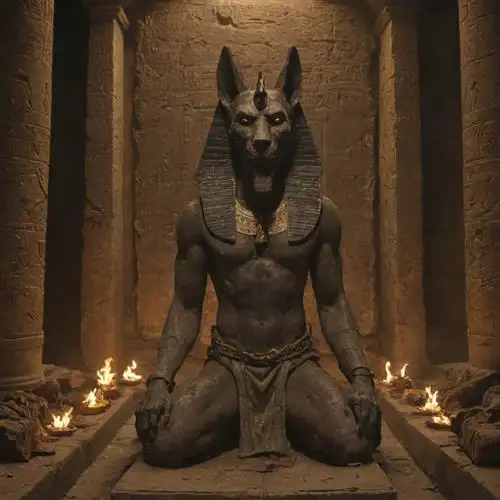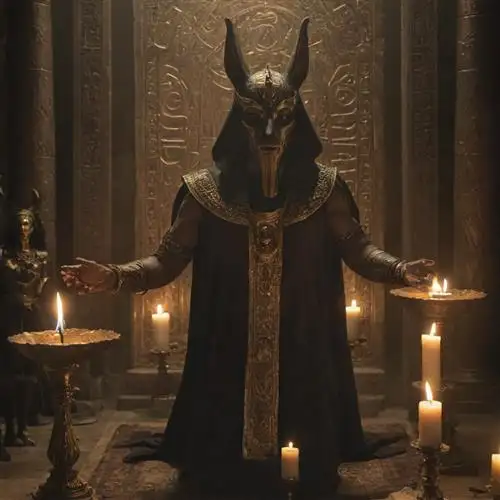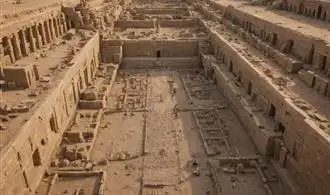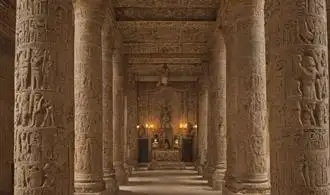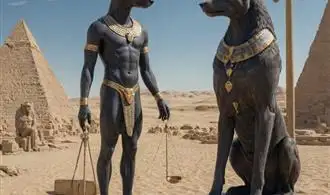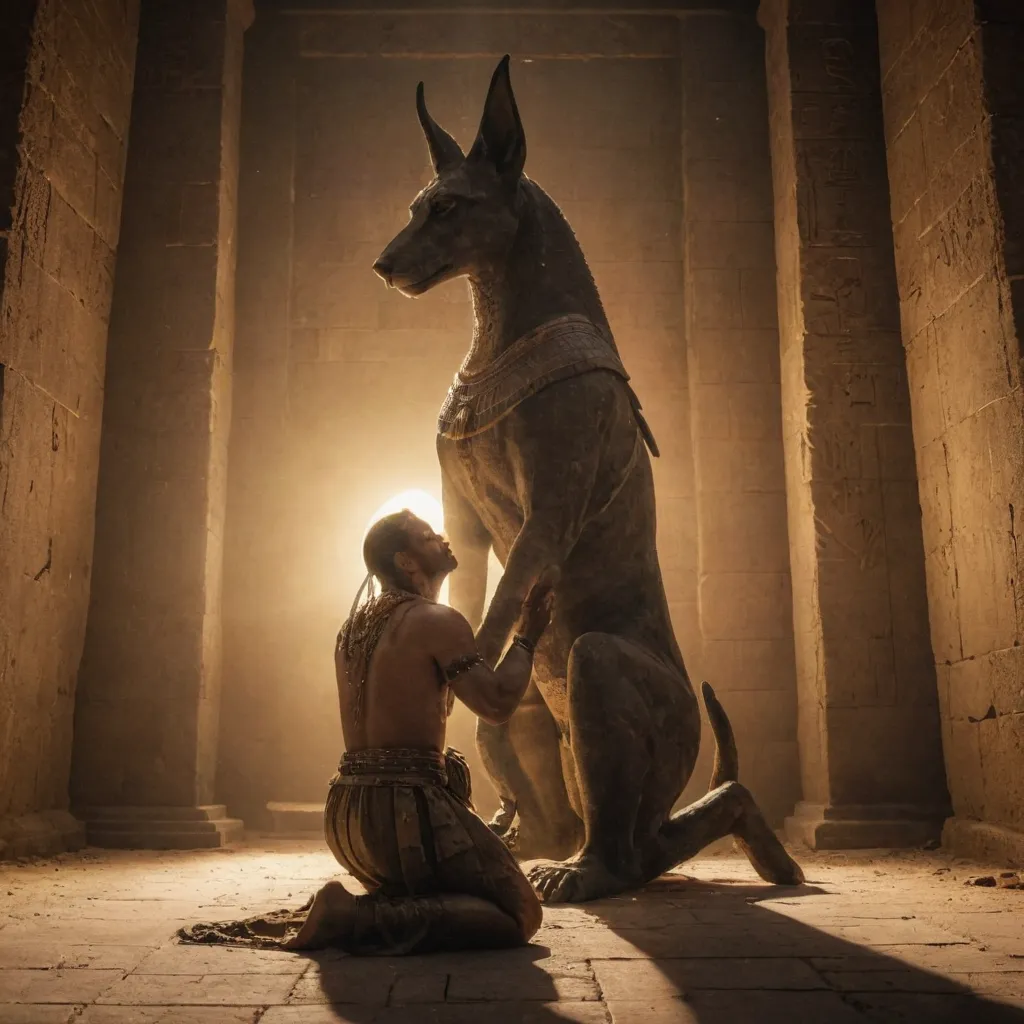
Mummification Rites of Anubis
The mummification rites associated with Anubis, the ancient Egyptian god of the dead and embalming, hold a profound significance in understanding the rituals and beliefs surrounding the afterlife. As the protector of the deceased and the guide through the process of mummification, Anubis played a crucial role in ensuring the safe passage of the soul from this life to the next.
One of the central elements of the mummification rites was the Ritual of the Opening of the Mouth. This ceremony, performed by the sem-priest, was believed to restore the deceased's senses and allow them to receive sustenance in the afterlife. The process involved using special tools, such as the adze and the purification hook, to touch specific points on the mummy's face, ultimately "opening the mouth" and restoring the deceased's ability to speak, smell, and taste.
Another significant aspect of the mummification rites was the placement of specific amulets and talismans on the mummy. These objects, which included the scarab beetle, the falcon, and the Djed pillar, were believed to imbue the deceased with magical powers and protection during their journey to the afterlife. The positioning of these amulets on the mummy's body was a carefully choreographed ritual, ensuring the proper alignment and symbolism.
The process of mummification itself, overseen by Anubis, was a meticulous and intricate procedure. It involved the removal of internal organs, the desiccation of the body, and the wrapping of the mummy in linen bandages. Each step of this process was accompanied by prayers, incantations, and the invocation of Anubis, ensuring the preservation of the physical form and the safeguarding of the soul.
Additionally, the funerary rituals performed in the presence of Anubis were crucial in the belief of the ancient Egyptians. These ceremonies, such as the Opening of the Mouth and the placement of the mummy in the tomb, were designed to facilitate the deceased's transition into the afterlife and ensure their continued existence in the realm of the gods.
Anubis Funerary Procession
The Anubis Funerary Procession was a sacred ritual that held immense significance in ancient Egyptian culture. This solemn ceremony marked the final journey of the deceased, guiding the soul to the afterlife under the watchful eye of Anubis, the jackal-headed god associated with mummification and the afterlife.
At the heart of the funerary procession was the mummified body of the deceased, meticulously prepared and adorned for their eternal rest. The procession would begin at the deceased's place of death, with the mummy placed on a wooden sledge or bier, often adorned with intricate carvings and symbols related to Anubis and the afterlife. Family members, priests, and professional mourners would accompany the mummy, chanting prayers and performing rituals to ensure a safe passage to the afterlife.
One of the most significant aspects of the Anubis Funerary Procession was the role of the lector priest, who would recite spells and incantations from the Book of the Dead. These sacred texts were believed to provide the deceased with the knowledge and protection needed to navigate the challenges of the afterlife. The lector priest would also perform the Opening of the Mouth ceremony, a ritual that was thought to restore the senses of the deceased and allow them to speak, breathe, and partake in the offerings presented during the procession.
As the procession made its way to the tomb or necropolis, the mourners would often perform a series of rituals and ceremonies. These could include the symbolic weighing of the heart, where the deceased's heart was weighed against the feather of truth to determine their worthiness for the afterlife. If the heart was found to be pure, the deceased would be granted passage to the realm of the dead, where they would be judged by Anubis and the other deities of the underworld.
Anointing with the Oils of Anubis
Anointing with the Oils of Anubis is a revered ritual in the ancient Egyptian tradition, connected to the veneration of the jackal-headed god Anubis. This ritual held immense significance for the Egyptians, as it was believed to invoke the divine protection and guidance of Anubis, the patron of the dead and the embalming process.
The oils used in this ritual were meticulously crafted, each ingredient carefully selected for its symbolic and practical properties. Myrrh, for instance, was prized for its ability to preserve and purify, while frankincense was thought to facilitate communication with the divine. These aromatic essences were blended with precision, creating a sacred ointment that was then applied to the body or funerary objects during ceremonies.
The application of the Oils of Anubis was a solemn and reverent process, performed by trained priests or priestesses. The individual being anointed would often undergo a purification ritual, cleansing their body and mind before the sacred oils were applied. This act of anointing was believed to bestow the recipient with the protective powers of Anubis, guiding them through the transition from life to the afterlife.
For those seeking to connect with the energy of Anubis, recreating this ancient ritual can be a profound and transformative experience. By mastering the iconography and symbolism of Anubis, one can better understand the deeper meaning behind the Anointing with the Oils ritual. Through this practice, individuals can tap into the protective and purifying energies associated with Anubis, cultivating a deeper spiritual connection with the Egyptian pantheon.
Invocation of Anubis for Protection
The invocation of Anubis, the ancient Egyptian god of the dead, for protection is a profound and transformative ritual. Anubis, with his jackal-like head, is closely associated with the afterlife, mummification, and the protection of the dead. However, his powers extend far beyond the realm of the deceased, offering safeguarding for the living as well.
To invoke Anubis for protection, one must approach the ritual with reverence and a deep understanding of the deity's significance. The ritual typically involves the creation of an altar, adorned with symbols of Anubis, such as his signature black color, candles, and offerings. Practitioners may also choose to incorporate elements like black stones, incense, and images of the god to heighten the spiritual experience.
The invocation itself is a delicate process, requiring the supplicant to call upon Anubis with a pure heart and a sincere desire for his guardianship. Practitioners may recite prayers, chants, or affirmations, focusing their intention on Anubis's ability to shield them from harm, both physical and spiritual. The ritual may also involve meditation, visualization, or the use of sacred objects to deepen the connection with the deity.
It is important to note that the invocation of Anubis for protection is not a one-time event, but rather a ongoing practice that requires dedication and consistency. Regular offerings, rituals, and acts of reverence towards Anubis can strengthen the bond between the practitioner and the deity, ensuring a continuous flow of divine protection.

